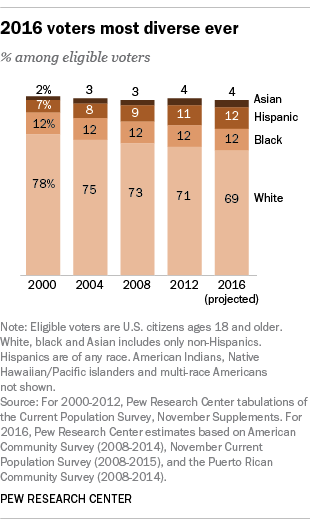Trump wins Electoral College thanks to older whites, loses popular vote

When he is sworn into office, President-elect Donald Trump will become the fourth commander-in-chief in US history to win in the Electoral College but lose the popular vote. In this historic election, Americans did not vote along traditional lines.
Although the votes are still being counted in some states, Democratic nominee Hillary Clinton appears to have won the popular vote with nearly 59.8 million votes, compared to Trump’s almost 59.6 million votes – a lead of about 0.2 percentage points or more than 200,000 votes.
Winning the popular vote is a bitter consolation prize for Clinton, as overall victory is based on the 538 members of the Electoral College, each of whom represent a state or the District of Columbia based on population. The number of electoral voters a state gets is equal to its representation in Congress, with a minimum of three (Delaware, DC, Montana, North Dakota, South Dakota, Vermont and Wyoming) and a maximum of 55 (California). The winning candidate must receive at least 270 votes in the Electoral College. With Michigan (16) and New Hampshire (4) still outstanding, Trump has 290 electoral votes and Clinton only 218.
Trump is set to become the second president in 16 years to win the Electoral College and lose the popular vote; George W. Bush was the first in the controversial 2000 election. However, it happened twice in 12 years in the 1800s: Rutherford B. Hayes in 1876 and Benjamin Harrison in 1888. Hayes suffered the biggest loss in the popular vote, losing by 3 percentage points to Southern Democrat Samuel Tilden, but Trump comes in second at 1.2 points. Both Bush and Harrison lost by less than a point to Vice President Al Gore and incumbent President Grover Cleveland respectively, according to Dave Leip’s Atlas of US Presidents.
There is one other time that a president entered the White House without winning the popular vote, but that was in 1824, due to a four-way race that did not produce a winner in the Electoral College, forcing the House of Representatives to decide, in accordance with the 12th Amendment. The House elected John Quincy Adams as president. At that point in time, candidates did not run as a combined presidential and vice presidential ticket, and John C. Calhoun won the vice presidency outright.

The situation that Trump finds himself in is thus relatively rare, but shifting demographics in the country mean that it could happen more often in the future, according to Vox. The US is becoming more racially and ethnically diverse; by 2055, there will not be a single racial or ethnic majority, the Pew Research Center found ahead of the Population Association of America (PAA) annual meeting. Most of those population gains by minorities are occurring in solidly Democratic and solidly Republican states, which means that they did nothing to shift the electoral map.
While Trump made headway into all racial and ethnic groups compared to 2012 Republican nominee Mitt Romney, it was still whites who handed him his victory, with 58 percent voting for him, compared to 37 percent for Clinton. Whites made up 70 percent of voters on Tuesday. Trump gained 7 percentage points among black voters, 8 points among Hispanic and Latinos, 11 percent among Asians and 1 percent among other ethnic groups, according to a New York Times analysis of exit polling.
However, that doesn’t mean he did well among those groups. The vast majority of black voters (88 percent) chose Clinton, as did 65 percent each of Hispanic/Latino and Asian voters, while 56 percent of people belonging to other ethnic groups voted for Clinton.
Millennials ‒ in this case defined as those born after 1980 ‒ have likely replaced the baby boomers as the largest generation. Trump again made headway with this group, gaining 5 points over Romney, but lost the group overall. More than half (55 percent) voted for Clinton, while only 37 percent opted for Trump. It was voters age 45 and older ‒ the baby boomers and Generation X ‒ who gave him the victory, with 53 percent voting for Trump.
So basically, Trump won because of older white people, according to @nytimes & @cnn analyses of exit polling pic.twitter.com/rkfXLWixau
— Aliza K (@TerrierTerp) November 9, 2016
If millennials had been the only voters, it would have been a landslide victory for Clinton in the Electoral College. Instead, however, they were in the minority, making up only 44 percent of voters on Tuesday.
This is how the future voted. This is what people 18-25 said in casting their votes. We must keep this flame alight and nurture this vision. pic.twitter.com/ivuXrar869
— Eliza Byard (@EByard) November 9, 2016
There is one place that the popular vote does matter, however: third parties. If a third-party candidate receives 5 percent of the vote, then their party is eligible to receive federal grants from the Federal Election Commission in the 2020 general election. Unfortunately for Libertarian Gary Johnson (less than 4.1 million), Green Jill Stein (just over 1.2 million) and independent Evan McMullin (about 423,000), none of them reached the necessary milestone. If all their votes were to be combined, they would come to just under 5.7 million, or about half a million votes short.













